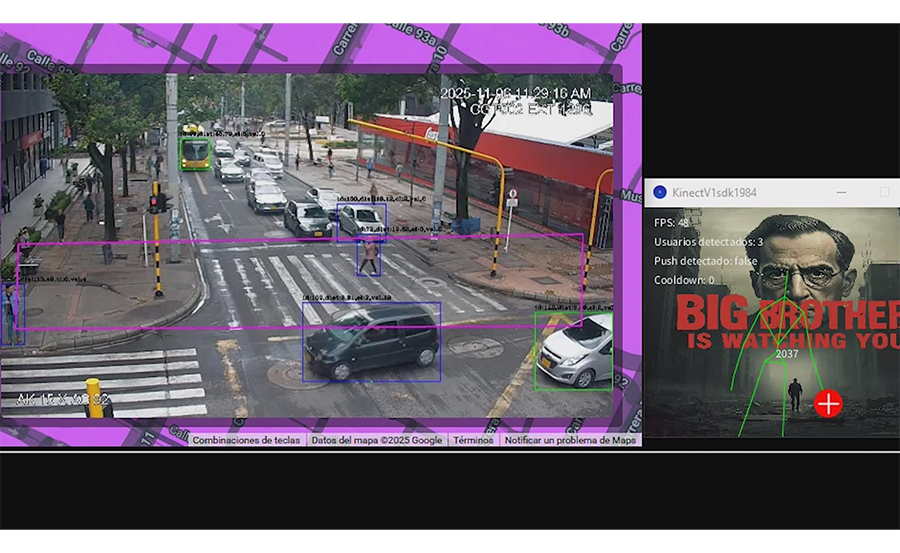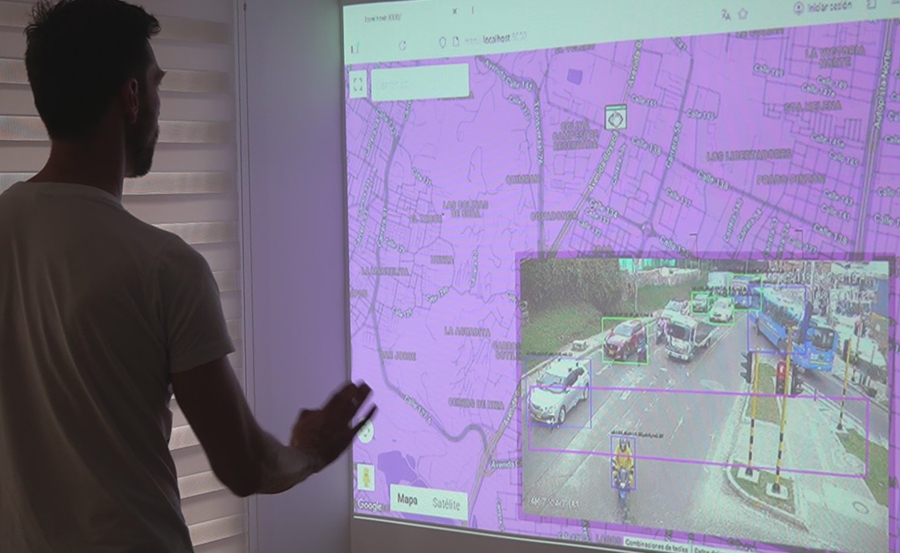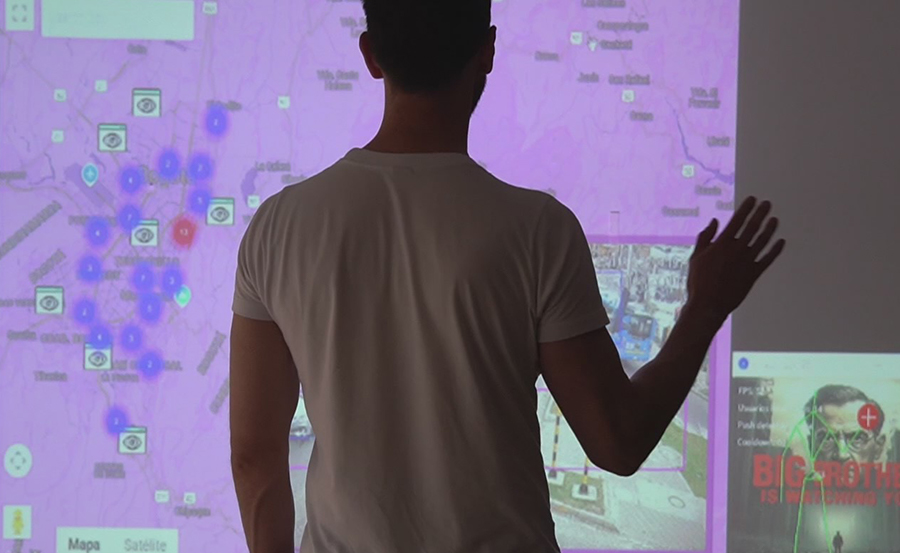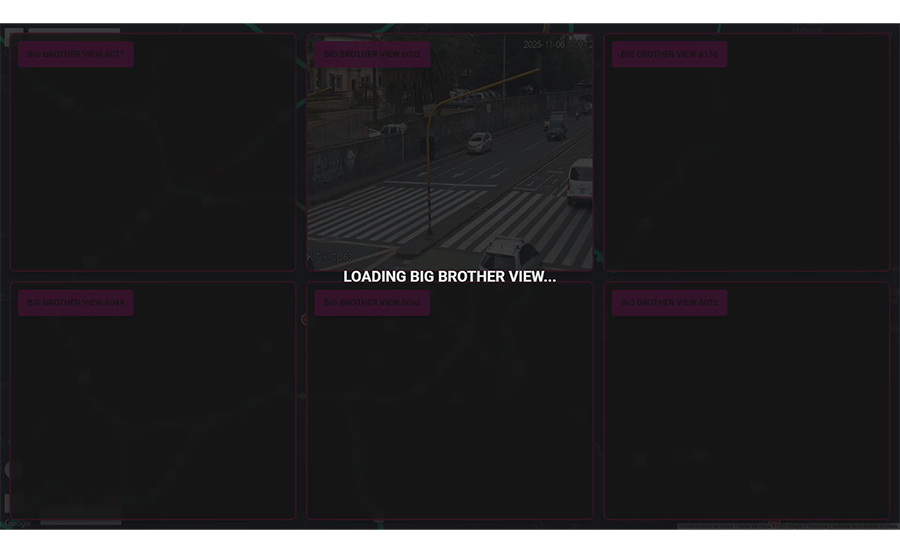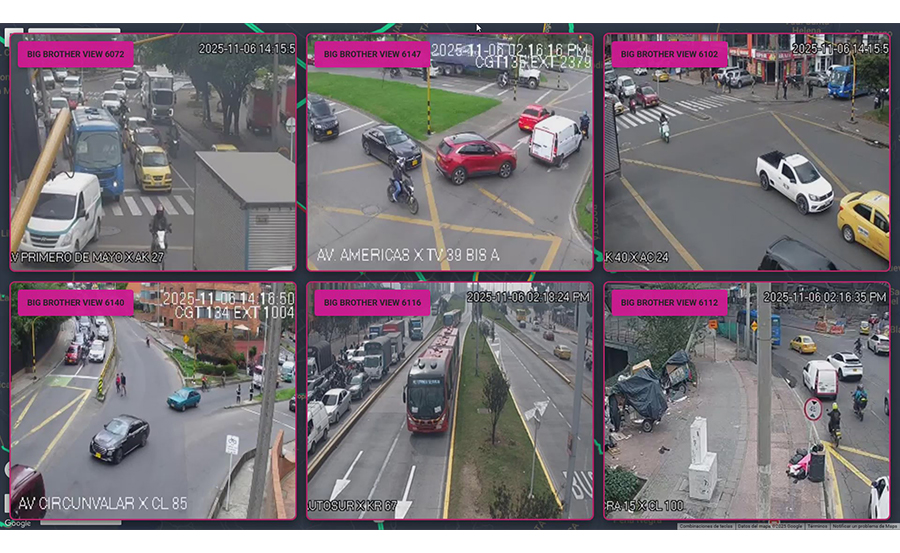1984 Prophecy: Intimate Surveillance
Bogotá-Colombia is watched by over 5,000 police security cameras, a digital panopticon that identifies, monitors, analyzes, and profiles its citizens daily. This installation consists of a double projection of Bogotá's video surveillance system where 30 of the city's 5,000 cameras have been hacked and visualized on a map where viewers become complicit in the act of watching by selecting a camera, which then begins to process, detect, and track the people and vehicles seen in the camera's video streaming, revealing live broadcasts of strangers' unguarded moments, where Bogotá's residents leave digital traces involuntarily in public space. On the second projection, Six additional screens display feeds every sixty seconds, creating an endless archive of catalogued lives.
Detection and profiling are not new in Colombian society, as we live in a polarized country under the politics of the internal enemy, where surveillance has long been weaponized. But the work exposes how technology amplifies control: algorithms now read locations, predict behavior, and categorize dissent. Recognizing that technology is never neutral, the installation reveals how it serves the dominant narrative, transforming citizens into data, intimacy into intelligence, and presence into permanent trace.
The work poses the following question: in a country where being watched means being suspected, what remains of privacy? When does protection become profiling? And who decides which people deserve to be tracked, analyzed, and remembered by the machine?
Every gesture we make when selecting a camera reflects the system itself: natural, intuitive, almost invisible. We have become Big Brother, our own jailers, wielding panoptic power with a simple hand gesture.
Doublethink: "Surveillance is security. The absence of privacy is protection". The future Orwell feared didn't arrive with military boots, but with interfaces and dashboards.

